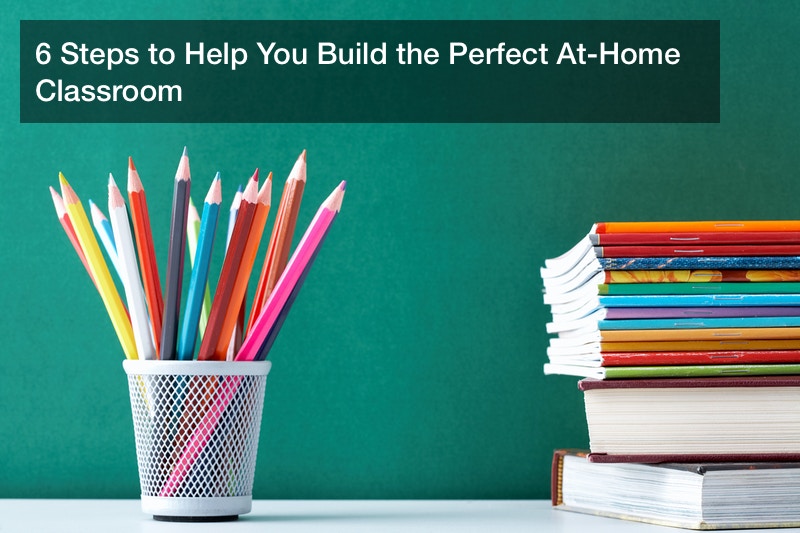Disclaimer: Charms Ville. This site provides fashion and lifestyle content for informational purposes only.
Learning looks a lot different this year. With a majority of schools using a remote learning program, the lines between home, work, and classroom are getting thinner and thinner. It’s easy to feel overwhelmed by all of this change and your new responsibilities, but there are ways to make it easier.
Many communities are banding together to provide learning support for children and to reduce stress for parents. For instance, in the Milwaukee area, one group is providing free tutoring for economically challenged families. The Oasis Group began with one school district, and with the overwhelming need for service, the group has now expanded to two other school districts in the area.
The group has offered in-person tutoring in the past, but with schools closed, they’re providing virtual instruction this year. If you have children that are currently enrolled in a remote learning program, you know how stressful it can be on both you and your child.
With the following guidelines about how to set up your own in-home classroom, you’ll be able to provide your child with a foundation for successful virtual learning.
Decide Which Room Will Be the Classroom

Consistency is key in any learning program, but with an in-home remote learning program, it can be easy to let routines become less structured. Two ways to maintain consistency for your child are to keep a normal school day schedule and to pick one room in the home for learning. By designating a specific room as a classroom, your kids will know it’s time to get to work when they enter the room. In addition to maintaining consistency, choosing one room for virtual learning is a great way to ensure all of the required materials stay in one place so you minimize the risk of necessary items being misplaced.
Your living room may have comfortable seating, but it also has a number of distractions. Bedrooms may work for kids with a lot of discipline, but bedrooms also have plenty of temptations. From televisions to toys, it can be hard for a child to remain focused in their own room.
If you spent time perfecting your DIY cabinet installation technique while you were stuck at home, now’s the time to fully reap the rewards. No matter your kitchen design, it can be one of the best places to set up an area for your child’s remote learning program. Without the distraction of tempting toys, tablets, or television, the kitchen fosters learning and is a place where the family unit can come together.
Clean Up and Prepare the Designated Place

Whatever room you choose for your remote learning program space, you need to make sure that it’s a clean and comfortable area. This goes beyond cleaning up clutter. To help your kids effectively engage in virtual learning, you want to make sure that your space is properly cared for.
Even though your child is learning at home, handwashing is still something you need to be diligent about. Get any necessary water heater services to make sure you have plenty of warm water for frequent handwashing.
It’s important to consider every aspect of your space, not just the obvious things such as surfaces for computers or proper lighting. Whether you’re working from home as your child goes to school online or you just need to be able to focus on daily tasks around the home, you no doubt want to create a space that is quiet and relaxing. Children tend to move around a lot, so if you’re dealing with a loud flooring material, it might be a good idea to place rugs under chairs to eliminate as much noise as possible.
If there are any other major repairs or projects to complete, now is the time to do so. When you’ve finished the larger projects, it’s time to get to work on cleaning your space. Make it a group activity and have your child help you wipe down surfaces, put items in their proper places, and make the area as tidy as possible.
Set Up the Classroom

Once your space prepped and ready, it’s time to start actually setting up the classroom. If your child is working in their bedroom, setting up the classroom will mean eliminating as many distractions as possible in their workspace. A desk is a great space to learn, but if it has a small TV on it or there are toys taking up space, it’s important to move these items away from the classroom area. You’ll also want to have your child tidy the area surrounding the desk as clutter can be a distraction and cut down on productivity.
If you’re setting up a classroom in a more common area of your home, like your kitchen, you’ll need to strike a balance between making sure your child has everything they need and keeping the space usable. One of the benefits of a remote learning program is digital textbooks. Some students may still have physical textbooks, but digital textbooks are widely used by educators in remote programs. Fewer books mean less clutter, making it much easier to continue utilizing your kitchen as normal.
What other items do you need for a virtual classroom? The answer to this question is largely dependent on the age of your child. Generally speaking, kitchen timers are a great addition to an in-home learning space. Even adults struggle to sit for hours behind a screen, so setting timers for breaks is a great way to keep your child engaged in the learning process. Other items to have at hand include pencils, pens, paper, art supplies, paper, and sticky notes, as well as hand sanitizer and water bottles.
Add Some Comforting Touches

Well before the first day of school every year, teachers are in the classroom setting it up in a way that’s conducive to learning. While a remote learning program is far different than being in a classroom, adding personal touches to your child’s work area is a great way to keep them motivated.
What can you add? Motivational posters or pictures are always a great idea, as these can provide kids with encouragement during some of the more difficult aspects of online learning.
Another thing to consider is flowers. Greenery has long been proven to help stimulate mental activity and provide a soothing effect on one’s mood. Additionally, recent research suggests that people who give flowers as gifts are considered to be successful, caring, and emotionally intelligent individuals.
You may also want to have healthy snacks handy as well as cushions for hard chairs and space heaters for cold rooms.
Get Creative with Learning Styles

Think about your classrooms as a child or the last classroom your child was in, and you’ll probably recall a variety of materials and objects. Teachers are trained to understand various learning styles so that they can help every student excel, and you can help your child at home by keeping materials on hand that foster their learning style.
It’s widely accepted that there are seven learning styles, including visual, aural, verbal, physical, logical, social, and solitary. Your child may have more than one learning style, and by figuring out how they learn, you’ll be able to help them succeed.
If your child is a visual learner, whiteboards, puzzles, and charts can be a great asset to your remote learning program classroom.
Aural learners may benefit from headphones to help block out background noise during their lessons, and you can expand their horizons with a musical theatre class.
A verbal learner generally loves to read and write, so providing them with creative writing prompts may be an effective tool to aid their understanding of their current lessons.
Physical learners like to use their hands. If you have a younger student, blocks for counting can be helpful, or you can help them learn about money and math by using actual dollars and coins.
Logical learners are very mathematical in their approach to understanding. Word problems like “if a trailer holds X items per foot, how many items would be found on a 53 foot trailer?” can help these students.
Social learners learn best working in groups collaboratively, so they may struggle in a remote learning program. To help them, check with friends and family with children the same age as yours. If you have a network of people, arrange for virtual meetings to allow your social learner to bounce ideas off of their peers and to work through lessons with them.
Solitary students prefer quiet areas and to work on their own, so they may appreciate the solitude of a remote learning program to traditional in-classroom instruction.
Don’t Be Afraid to Ask for Help

Right now, parents are busier than ever. Between taking care of everyday tasks, their own work, and being stand-in teachers, parents are likely to be stressed and frustrated. This amount of responsibility affects every area of your life, from relationships to mental health. You may be in the middle of a difficult time personally, too. Whether you’re divorcing your partner, caring for an elderly parent, or anything in between, remember that it’s okay to ask for help.
One parent may tend to take on the bulk of responsibility when it comes to remote learning programs. Try to divide tasks fairly, playing to the unique strengths of each partner. Does your spouse excel at writing? Have them help your kids with their English lessons. Are you a math whiz? Work with your child to solve algebra problems.
The key for reducing individual strain is to make learning a family activity and to keep the distribution of work fair so neither partner feels burnt out or underappreciated. If your partner’s car is having issues and needs to search for Mercedes Benz parts online, then perhaps it’s your day to take over the teaching lessons. Take turns and be sure everyone is involved and taking breaks as necessary.
You don’t have to do this alone. Even with two partners taking on roles in a remote learning program, the amount of work can be staggering. Remember that teachers are trained to understand how children learn and how to effectively help them. If you’re feeling overwhelmed or like you aren’t able to effectively help your child, consider hiring an online tutor.
As mentioned above, many communities are putting together groups of online tutors to provide learning support for kids and to reduce the stress on parents. Some communities are providing these services for free, but even if you can’t find a local group, there are plenty of online tutors available for you to hire. High school or college students can be great tutors for a remote learning program and are a cost-effective way for you to help your child better understand their lessons.
Before you embark on setting up an online classroom, remember that you aren’t expected to be perfect. Progress over perfection is the key to any successful education, and by taking the time to properly prepare a space for your child, you’re setting the stage for meaningful learning.
While you may not have the years of training and experience that a teacher does, you know your child better than anyone. Helping them learn by focusing on their learning style, keeping a designated space for learning, and being involved are all important aspects of successful virtual learning. Keep schedules as consistent as possible, and never underestimate the power of simply being present for your child.
You might be surprised to know just what an impact asking your child what they are working on can have. Ask them to explain what they’ve learned over dinner, or talk to them about what they’re going to work on that day at breakfast. By communicating with them, you’re helping your kids better understand their lessons, and you’re showing them that you’re an active part of their remote learning program.



